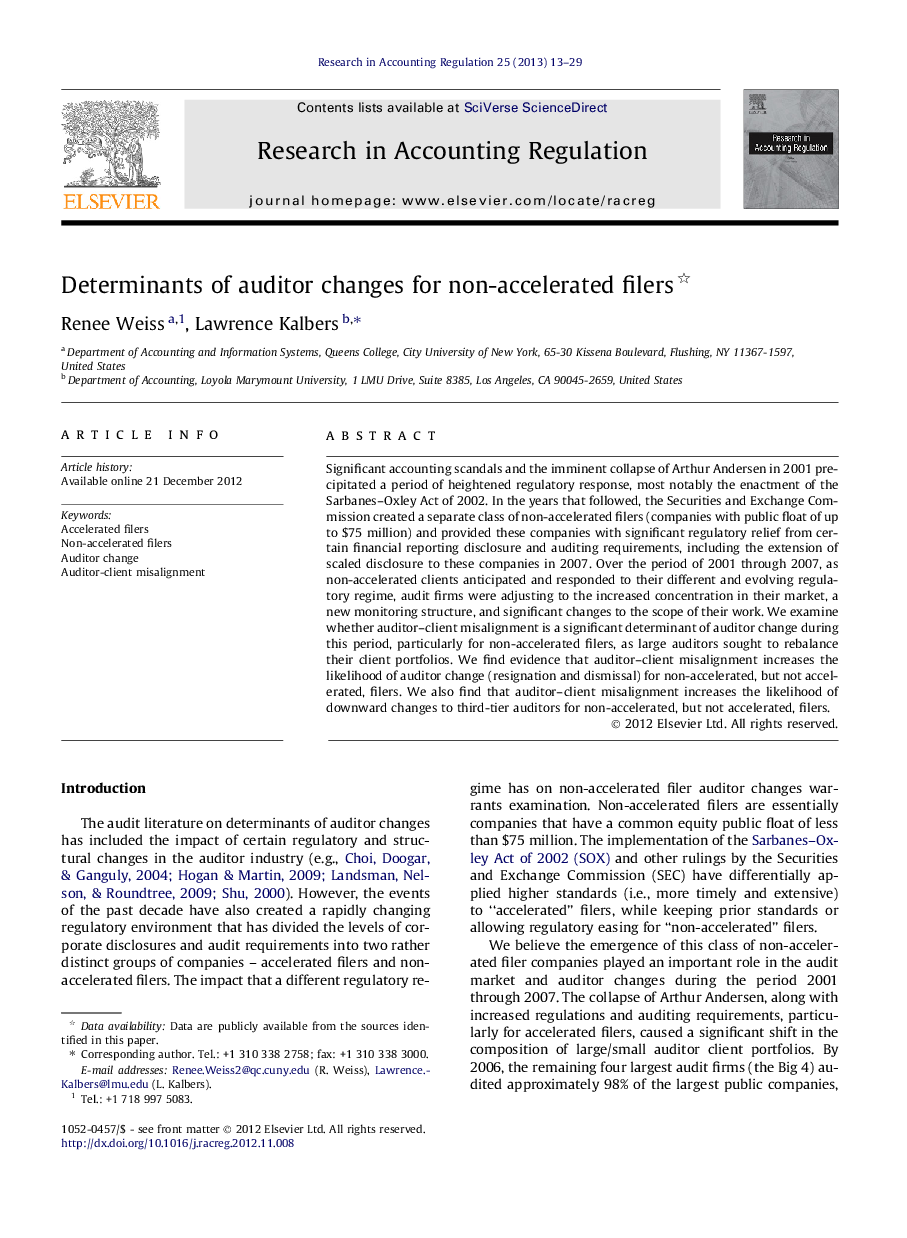| Article ID | Journal | Published Year | Pages | File Type |
|---|---|---|---|---|
| 1006629 | Research in Accounting Regulation | 2013 | 17 Pages |
Significant accounting scandals and the imminent collapse of Arthur Andersen in 2001 precipitated a period of heightened regulatory response, most notably the enactment of the Sarbanes–Oxley Act of 2002. In the years that followed, the Securities and Exchange Commission created a separate class of non-accelerated filers (companies with public float of up to $75 million) and provided these companies with significant regulatory relief from certain financial reporting disclosure and auditing requirements, including the extension of scaled disclosure to these companies in 2007. Over the period of 2001 through 2007, as non-accelerated clients anticipated and responded to their different and evolving regulatory regime, audit firms were adjusting to the increased concentration in their market, a new monitoring structure, and significant changes to the scope of their work. We examine whether auditor–client misalignment is a significant determinant of auditor change during this period, particularly for non-accelerated filers, as large auditors sought to rebalance their client portfolios. We find evidence that auditor–client misalignment increases the likelihood of auditor change (resignation and dismissal) for non-accelerated, but not accelerated, filers. We also find that auditor–client misalignment increases the likelihood of downward changes to third-tier auditors for non-accelerated, but not accelerated, filers.
